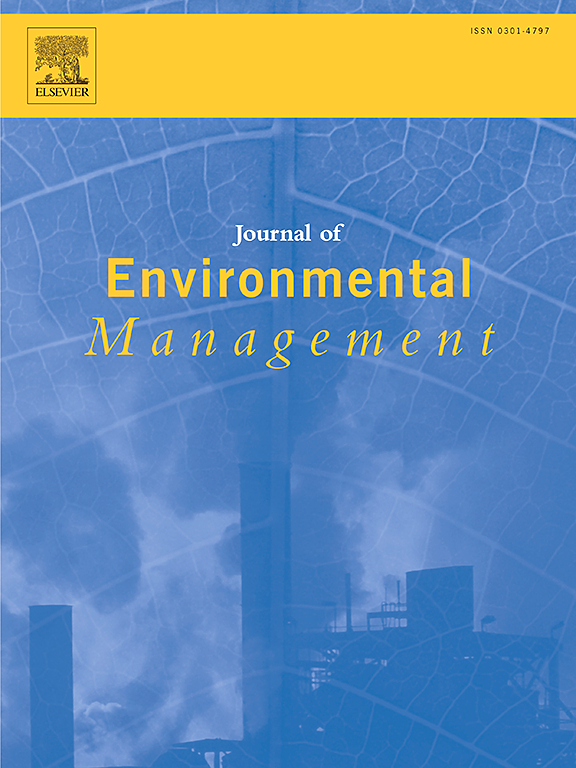Recycled crushed concrete as a filter medium for phosphorus and heavy metal removal from semi-synthetic stormwater
IF 8
2区 环境科学与生态学
Q1 ENVIRONMENTAL SCIENCES
引用次数: 0
Abstract
Facing escalating urban drainage issues, cities are increasingly adopting nature-based solutions, which have proven effective for flood prevention and filtration of particulate contaminants. However, retention of dissolved nutrients and heavy metals has remained a challenge. This column study investigates the long-term implications of using crushed concrete as a filter medium for retention of phosphorus (P), copper (Cu), and zinc (Zn). Results show that crushed concrete achieved significantly higher P retention (98.1 ± 1.6 %) than filter sand and gravel (7.13 ± 9.5 %). Both materials demonstrated high metal removal capabilities (>95 % for Cu and >99 % for Zn). While the filter sand and gravel exhibited leaching of P and Zn during stress tests with demineralised water, the pollutants retained in the crushed concrete column were not prone to remobilisation. A follow-up mini column experiment confirmed that the crushed concrete can sustain its high removal efficiencies for P, Cu, and Zn over extended periods. Freshly crushed concrete with a low degree of carbonation was critical for efficient P removal, whereas grain size was the more influential factor for heavy metal retention. Nevertheless, high P removal coincided with an elevated effluent pH (>11) and pronounced chromium (Cr) leaching in the initial phases of both column experiments. While crushed concrete has strong potential to serve as a long-lasting, sustainable, and cost-effective medium for removal of P, Cu, and Zn from urban runoff, these drawbacks could be a barrier to wider adoption. Therefore, further research should explore optimised sourcing, tailored pretreatment, and application possibilities.
再生碾碎混凝土作为过滤介质,从半合成雨水中去除磷和重金属
面对日益严重的城市排水问题,城市越来越多地采用基于自然的解决方案,这些解决方案在防洪和过滤颗粒污染物方面已被证明是有效的。然而,溶解的营养物质和重金属的保留仍然是一个挑战。本专栏研究调查了使用碎混凝土作为过滤介质保留磷(P)、铜(Cu)和锌(Zn)的长期影响。结果表明,碎石混凝土的P保留率(98.1±1.6%)显著高于滤砂和碎石(7.13±9.5%)。两种材料都表现出很高的金属去除能力(对Cu的去除率为95%,对Zn的去除率为99%)。虽然滤砂和砾石在去矿化水的压力测试中表现出P和Zn的浸出,但保留在破碎混凝土柱中的污染物不容易再活化。后续的小型柱实验证实,碾碎后的混凝土可以在较长时间内保持对P、Cu和Zn的高去除效率。低碳化度的新碎混凝土对高效除磷至关重要,而粒径对重金属保留的影响更大。然而,在两个柱实验的初始阶段,高P去除率与出水pH升高(>11)和明显的铬(Cr)浸出相吻合。虽然破碎混凝土具有强大的潜力,可以作为一种持久、可持续、经济高效的介质,从城市径流中去除P、Cu和Zn,但这些缺点可能成为广泛采用的障碍。因此,进一步的研究应该探索优化采购,定制预处理和应用的可能性。
本文章由计算机程序翻译,如有差异,请以英文原文为准。
求助全文
约1分钟内获得全文
求助全文
来源期刊

Journal of Environmental Management
环境科学-环境科学
CiteScore
13.70
自引率
5.70%
发文量
2477
审稿时长
84 days
期刊介绍:
The Journal of Environmental Management is a journal for the publication of peer reviewed, original research for all aspects of management and the managed use of the environment, both natural and man-made.Critical review articles are also welcome; submission of these is strongly encouraged.
 求助内容:
求助内容: 应助结果提醒方式:
应助结果提醒方式:


